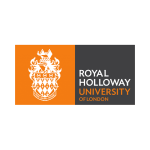
Warsaw University of Life Sciences – Poland
The Warsaw University of Life Sciences (Polish: Szkoła Główna Gospodarstwa Wiejskiego, SGGW) is the largest agricultural university in Poland, established in 1816 in Warsaw. It employs over 2,600 staff including over 1,200 academic educators. The University is since 2005 a member of the Euroleague for Life Sciences (ELLS) which was established in 2001. The SGGW offers some 37 different fields of study, 13 faculties in Agricultural Sciences, Economic Sciences, Humanities, Technical as well as Life Sciences.
Pays
Pays
Pologne
Informations sur Warsaw University of Life Sciences – Poland
Warsaw University of Life Sciences: Nurturing Agricultural and Veterinary Excellence
Founding and Early Evolution
Warsaw University of Life Sciences, originally established as the School of Agronomy on 23 September 1816 at Marymont, began its journey in the palace of Marie Casimire Louise de La Grange d'Arquien. Over time, it expanded with branches in Bielany, Ruda, Wawrzyszew, and Buraków. The institute's growth included the founding of an Institute of Veterinary Medicine at Rządowa and the establishment of the Institute of Rural Economy and Forestry in 1840.
Turbulent Times and Relocations
Under Russian rule during attempts at Russification, the school faced threats of closure, prompting moves first to Puławy and later within Russia itself. The institute returned to Warsaw following Poland's independence in 1918, assuming the title of Major School of Rural Economy in 1919. Horticultural studies were integrated into the curriculum in 1921.
Post-War Revival and Academic Expansion
After disruptions caused by World War II, Warsaw University of Life Sciences resumed operations in 1945. Significant developments followed, including the transfer of the veterinary faculty from the University of Warsaw in 1952. New departments were subsequently established, covering agricultural drainage, wood technology, animal husbandry, and landscape architecture (now known as the Landscape Architecture Section).
Growth and Modernization
The university acquired land and farms at Wolica and Natolin in 1956 to support its expanding infrastructure. In 1973, the faculties of agricultural technology and human nutrition were established, further enriching the academic offerings. The institution's leadership, including the Rector, operates from the historic palace of Julian Ursyn Niemcewicz, known affectionately as "the rector's palace."
Campus Facilities and Infrastructure
Located in Ursynów, Warsaw University of Life Sciences boasts a sprawling campus that combines historical charm with modern facilities. The 70-hectare main campus features an 18th-century palace alongside contemporary buildings housing most faculty offices and dormitories. Essential amenities include 12 dormitories, a state-of-the-art library, a comprehensive sports center with tennis courts, a sports hall, and a swimming pool. Additionally, the campus hosts a language center and a veterinary clinic.
Bourses proposées par Warsaw University of Life Sciences – Poland
L’université des sciences de la vie de Varsovie (en polonais : Szkoła Główna Gospodarstwa Wiejskiego, SGGW, littéralement « École centrale d’économie rura...
Autres organismes qui pourraient vous intéresser
Joint Institute for Nuclear Research
The Institute has seven laboratories, each with its own specialisation: theoretical physics, high energy physics (particle physics), heavy ion physics, condensed matter physic...
Western University – Canada
From its founding guided by Bishop Hellmuth’s vision to its current global standing as a research powerhouse, Western University has consistently led in education and researc...
Royal Holloway University of London
Royal Holloway, University of London, is ranked in the top 200 universities in the world. Through world-class research that expands minds and changes lives, the dedication of our t...








